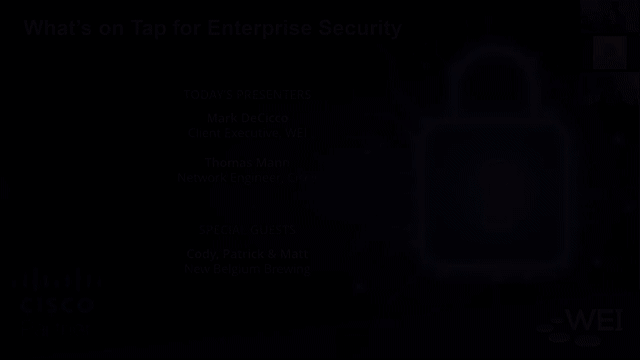 As the world becomes increasingly digitized and interconnected, the need for robust cybersecurity measures becomes more apparent. In order to stay ahead of ever-evolving threats and challenges, it is important to have a clear and effective cybersecurity strategy in place. The IT industry has seen many changes in recent years, and the future looks even more volatile. It is crucial that businesses adapt quickly and ensure their cybersecurity strategies keep up with the pace of change. Here we discuss some of the key trends in cybersecurity that businesses should be aware of, as well as tools to help your business stay ahead of the technological curve.
As the world becomes increasingly digitized and interconnected, the need for robust cybersecurity measures becomes more apparent. In order to stay ahead of ever-evolving threats and challenges, it is important to have a clear and effective cybersecurity strategy in place. The IT industry has seen many changes in recent years, and the future looks even more volatile. It is crucial that businesses adapt quickly and ensure their cybersecurity strategies keep up with the pace of change. Here we discuss some of the key trends in cybersecurity that businesses should be aware of, as well as tools to help your business stay ahead of the technological curve.
Cybersecurity Threats In A Hybrid Workplace
One of the biggest shifts over the course of the COVID-19 pandemic has been where people are working from. This is particularly true in the IT industry. According to one study from Stack Overflow, 42% of developers are fully remote, while an additional 42% are hybrid.
But IT enterprises are not the only ones encountering major changes to the ways their employees work. This trend has extended to other industries as well, from marketing to human resources. There are many challenges to having a remote workforce, but the most critical consideration for a business is the cybersecurity of their team.
When people “clock in” to work from their own devices or at-home networks, they introduce opportunities for cybersecurity breaches. One computer has the potential to compromise an entire business. As a result, many enterprises are looking for ways to minimize their security risks.
Multi-factor Authentication Reduces Cybersecurity Threats
To keep their information protected, many businesses have implemented passwords as a solution. Unfortunately, these offer little, if any, protection to a business. Many of us are guilty of using the same password across multiple platforms. While this makes memorizing our passwords easier, it also means that if a cybercriminal discovers one of your passwords, they gain access to all your logins.
Even if you are not guilty of this cybersecurity faux pas, your password can still be phished or discovered in some other non-human way. That is why Cisco’s Duo Security implements multi-factor authentication.
Multi-factor authentication goes beyond a simple password. It connects to other devices to verify a user’s identity before they access information. That way, if a password is compromised, users can deny access if they have not attempted to log into their resources.
Duo and Secure Endpoint Work Together To Provide Stronger Access Security

Cisco Offers Increased Cybersecurity Protection
Let’s say that you’ve verified a user’s identity. While that eliminates some of the threats to your enterprise, it does not eliminate threats from your employees. If an employee’s network or computer is already infected by malware, their computer can become a cyber Trojan Horse, a seemingly benign user playing host to malicious data.
For that reason, Cisco implemented Secure Endpoint. This resource offers centralized visibility of all the devices in your enterprise that access applications, workloads, and the network.
What sets this resource apart is what it allows the administrator to see. Not only do administrators have the ability to see users, they can also see what applications employees are using and the method of access. They can even see if a user has not updated the application they are using.
Cisco takes things a step further by implementing a smart AI to determine threats. The AI integrates information like firewalls, location, devices, and more to create a risk profile for the user.
This information can be used in combination with Duo Security. If Secure Endpoint detects malware on the device, Duo Security will block that device from accessing applications. And the best part? The administrator has complete control. They can use this information to deny or permit access to different data or applications.
Conclusion
Remote and hybrid work is here to stay, so businesses will need to do everything they can to ensure the security of their enterprises in 2023 and the future. Fortunately, tools like Cisco’s Duo Security and Secure Endpoint offer solutions to some of the most glaring cybersecurity threats. If you would like to integrate Cisco’s tool into your business, WEI can help. We help businesses of all sizes every step of the way, from purchase through implementation. Contact us today to figure out what tools are the right fit for you!
Next Steps: In the webcast below, WEI and Cisco lead an exciting virtual conversation about leveraging cybersecurity efforts to overcome today's cyber threats. The conversation was topped off with a visit from New Belgium Brewing as brewers Cody, Patrick, and Matt gave a lesson on brewing history and their favorite science behind beer.












